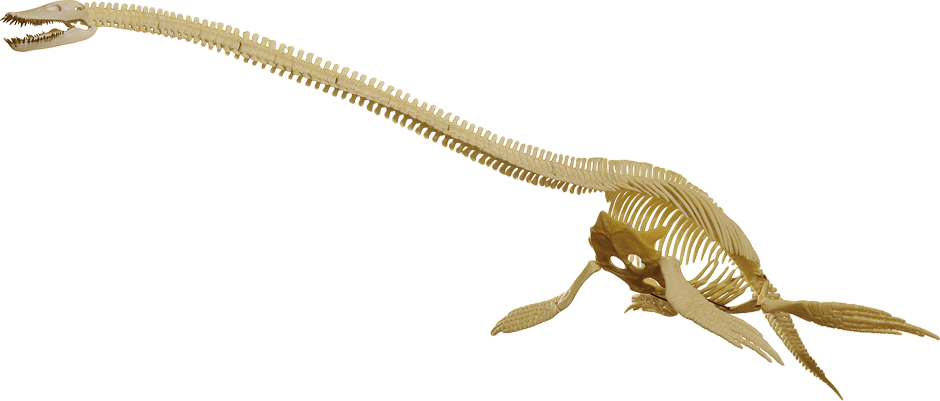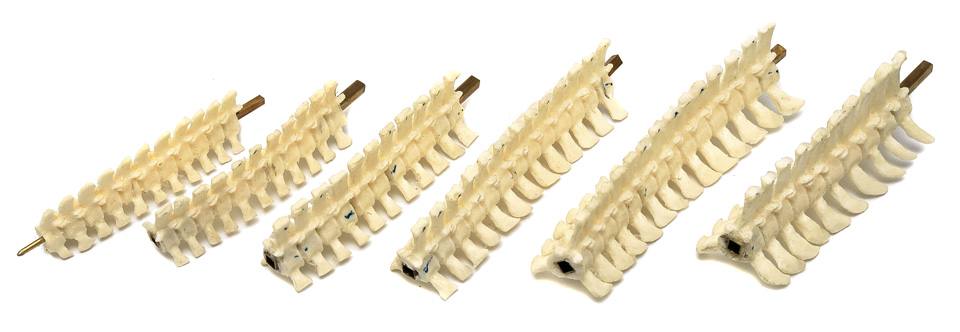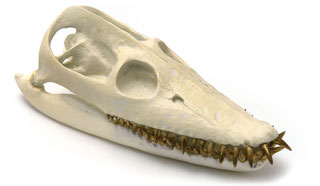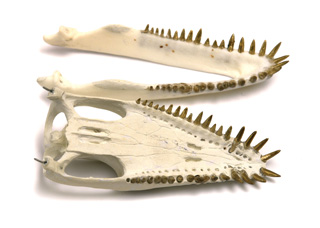BrantWorks build-up progress, October 2011
This is the animal with the world's longest neck. Over 70 neck vertebrae makes for a very specialized and highly evolved adaptation. In theory, the long neck and small head allows the animal to sneak up on schooling fish unawares. Fish can sense a large predator nearby using the lateral line sensors on the side of their body. The lateral line detects large objects in the vicinity by local changes in water pressure. The fish may sense the large body of the Elasmosaur approaching but, if they do, they believe it to be a safe distance away. In the meantime the jaws reach right into the school undetected and grab unwary fish with ease using spiky interlocking teeth. The tradeoff is that Elasmoaurs were probably easy prey for still larger hunters because their long and ungainly shape hampered maneuverability.
This project was inspired by the Kaiyodo Futabasaurus skeleton model by Shigeru Yamazaki.
The Futabasaurus model is wonderful but not ideal. Shigeru made the neck
short and the head too big but justified the variation by calling the
model a juvenile. No doubt juveniles would have had larger heads but it doesn't gel with me and I wanted the most extreme example of this type of animal, hence this model. As a starting point I recast selected elements of the Futabasaurus,
the balance being scratch built according to published literature.
The sternal plates, pelvis and skull were scratch built. I
extended and modified the neck after much finessing. It is still far from finished but
it will be stunning when completed. It already looks great and at nearly a meter long is
huge. It's also difficult to photograph!


Neck Elements
The neck is modification of the Kaiyodo Futubasaurus model. The Futabasaurus neck was much shorter so it was recast several times, dissected into short repetitive elements and recombined to produce new extended sections. These were linked and the entire length was then re-curved into a natural pose. The full neck was then divided into sections and these were joined with square-section brass couplings, each offset at different angles so the parts would slot together in only one correct order of parts. If you look at the image above you can see the square brass extension on one side and the recessed brass socket on the other. This is over-engineered but the neck is very robust for such a long thin part. As shown it is only roughly built. There is much detailing and painting yet to be done. The pencil and marker pen on the vertebrae are leftovers of me counting and juggling original cast pieces to create a full-length (450 mm) neck with graduated taper.
Skull Elements
The skull was scratch-built. The maxilla was carved from a block of epoxy putty with a dremel tool. The mandible was roughly formed from Sculpey clay and cast in resin. It was then refined and modified with a dremel tool and epoxy putty. Teeth were individually made from sharpened brass rods and fitted together for a proper inter-meshed bite. The image shows a roughly-completed model, unpainted and with further detailing to be done. Once finished the elements will be recast in resin. Length is 67 mm so the images above are about actual size.




